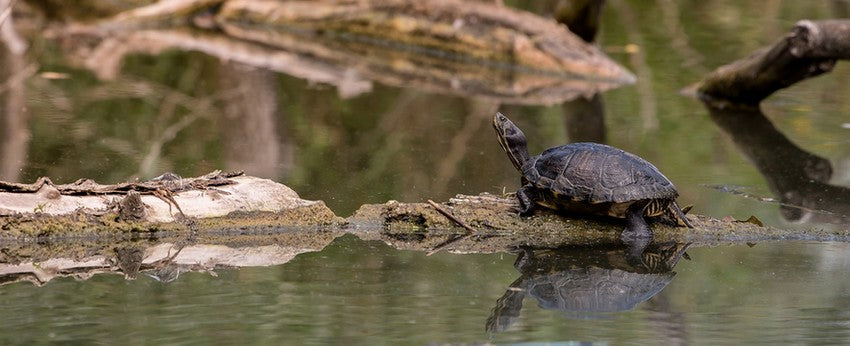
How long does a turtle live?
"The crane lives a thousand years, the tortoise ten thousand years," says an old Japanese saying.
These two animals are emblems of a long and happy life in the Japanese archipelago, due to their respective longevity. But what is the reality? It's easy to imagine that no turtle actually lives for several millennia, but where does it get this image of legendary longevity from?
How many years can a turtle really live?

Galapagos and Seychelles tortoises: absolute record
Yes, if we have this image of the turtle capable of living for tens, even hundreds of years, it is indeed to them that we owe it: the giant land tortoises of the Galapagos Islands and the Seychelles. In fact, some specimens can reach the incredible age of 150 years without any particular problem! And in captivity, they are known to have a very respectable life expectancy of around 120 years, and this in good health.
Scientists disagree
The most surprising thing about all this is that even scientists don't always agree on the exact age of these supercentenarian reptiles : determining their age (and therefore, studying their life expectancy) is a real challenge even for specialists. Some even agree that in reality, the life expectancy of these giant slow-moving shells is more like 200 years!
In any case, the debate will probably continue for a long time, given that no scientist will live long enough to be able to observe such a turtle from birth to death on their own. In any case, the current record (verifiable because it lives in captivity) is held by a certain Jonathan, a Seychelles turtle, born in 1832; which, at 188 years old, makes him the oldest land animal alive today. He must have things to teach us.

Island giants, okay... But what about the other species?
Generally, we can observe some fairly clear trends:
- Land turtles live longer than aquatic turtles
- Larger turtles live longer than those limited in their maximum growth.
- Turtles in captivity (provided they are well treated and cared for, of course) live longer than in the wild.
- Like many cold-blooded animals, turtles can potentially continue to grow throughout their lives. Therefore, the larger the turtle, the more likely it is to be old.
But in some cases, these may be preconceived ideas; and in any case, these comments should be qualified, because each species, even each specimen, will have its own specificities on these points.

The older she is, the bigger she is... or almost.
Many species (especially aquatic ones) do not reach immense size, regardless of their age.
Let's take the case of the red-eared slider (known as the " Florida slider "), whose sale has been banned in France because it is considered invasive: long sold as a so-called "dwarf" turtle, because measuring barely a few centimeters when it is still a baby, it has often taken by surprise the individuals who bought it, quickly reaching more than 20, or even 25 cm after a few years. Knowing that its maximum size does not exceed 30 cm, one might think that its life expectancy is also only a few years...
But no, because it has a longevity of more than 30 years , even 40 years! As if size and old age are not always to be put in parallel, or at least, not for all species.

Another example: The leatherback turtle
We are still in the field of aquatic turtles , and not the least: it is the largest of the seven known species of sea turtles, and even the largest turtle altogether. Its growth is impressive when you take the extremes: a few centimeters large at birth, the largest leatherback turtle measured reached 2.20m for a weight of 915kg, or nearly a ton!
If the Florida slider turtle can live 30 or 40 years, this one should easily live to be a hundred! Well, unfortunately not. It is estimated that it can, a priori, live about 50 to 60 years. Other, smaller marine species can reach up to 80 years , and some researchers believe they could live to be a hundred.
The age/size parallel is already a little more often verified for land turtles, whose growth is slow but uninterrupted from the beginning to the end of their life which, on average (all species combined) lasts about sixty years, even 80 years (and much more for some, as we saw above). On the other hand, small aquatic species have a longevity which generally revolves around 15 to 20 years.

Roughly, we can categorize turtle longevity like this:
- Giant land tortoises: over 100 years old
- Land turtles (generally): over 60 years old
- Sea turtles: 60 to 80 years
- Some aquatic species: 30 to 40 years
- Small aquatic turtles: around 20 years
- The longevity of turtles (all species combined) is maximum when they live in captivity and in optimal conditions.
It should be noted that these values vary greatly depending on the living conditions and habitat of the turtle studied: in the wild, the presence of predators, accidents, lack of food and other factors necessarily reduce the chances of living longer than the average for its species.
This also explains the uncertain, imprecise, and sometimes contradictory values of these figures: unless we only study turtles living in captivity , the maximum that scientists can put forward is a priori "the oldest known specimen is about X years old." But record holders like "Jonathan" from the Seychelles prove to us that these statistics can be exceeded without any problem, and that turtles still have many surprises in store for us!
Speaking of surprises... What if you too offered a symbol of a long and happy life as a gift to a loved one?


